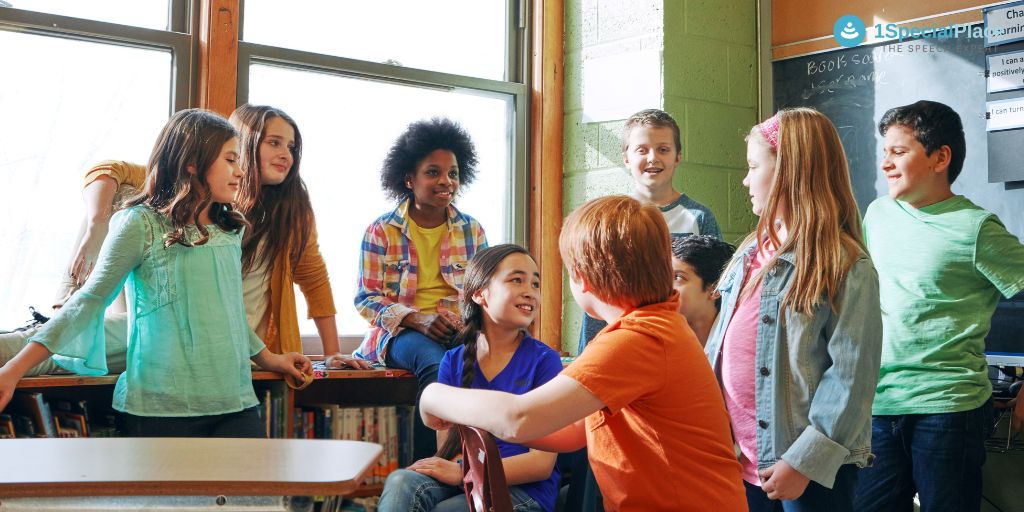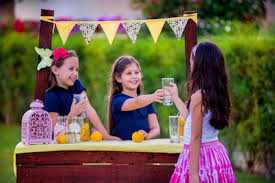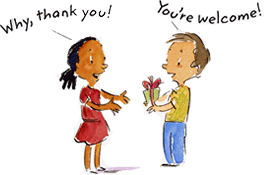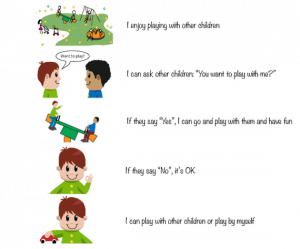
Tips To Improve Social Skills in Autism
Tips To Improve Social Skills in Autism
Have you ever wondered why a child with Autism does not actively participate at a birthday party? Or does he move away from a topic during a discussion? These are a couple of difficulties in a child with autism. These are related to difficulties in social skills. Developmental impairment known as autism spectrum disorder (ASD) is brought on by variations in the brain. People with ASD may struggle with confined or repetitive activities or interests, as well as social communication and engagement. Additionally, people with ASD may learn, move, or pay attention in various ways. It is crucial to remember that some individuals without ASD may also experience some of these symptoms. However, these traits can make life very difficult for those with ASD.
So what exactly are these skills?
In simple words, social skills are a set of rules. These rules help us to interact with one another in our community. Children and adults with Autism need help to develop social skills. Supporting social interaction is an important piece of the student’s educational plan.
Generally, people learn about these social skills by interacting with each other. With time, people learn these social rules of how to behave in social situations. But, for people with autism, it can be hard to learn and build up these skills.
Why do we need these skills?
Social skills are necessary for many reasons. They help integrate oneself with the community. It helps one to improve one’s participation in social gatherings. For example school programs, camps, group activities, etc. Children improve their quality of life when they learn to use these skills.
Is it really possible to teach social skills?
And after teaching these social skills, are these skills generalized into real-life situations? Would it help these children in their social relationships? Yes, there are some tips that can help to develop social skills.
Reinforce the things that the child does well socially.
For example, if a child is just learning how to wait for his turn to speak, this behavior needs to be encouraged. Giving the child reinforcements like a favorite treat or a sticker will help. This increases the chance that the child will do a good job again.

Observe, Wait & Learn
To learn how to interact socially, children must watch & observe the social situation. Here the child is given the entire social situation by modeling & role-playing it.
Teach your child to imitate.
Imitation is a very important skill that facilitates language, speech & even social skill development. For example, if the child was asked to approach his peers for a pebble game, the child could be given the model “Hi everyone, can I join your game?” which he would then have to imitate.
Contextual Learning
Teach your child context clues and referencing those around you. A good example of this would be if everyone is standing, then he/she should be standing too. Children learn in situations in which they are a participant.
Simplify the Task
Social skills can often be complex & difficult for a child. They can be broken down into simple components & taught. These individual components can also be taught with role-playing or by using pictures. When the child understands the simple steps, it can be made complex.
Identify your child’s strengths
Every child is born with strengths. Some children with Autism love music, memorization skills & many more such specific interests. These interests need to be identified & use to motivate them in social situations.
For example, if a child has very good at playing the violin, the child can have a role-playing activity. The child & his violin playing skills can be the centermost focus on the social situation. In this case, the child will enjoy & perform better because the situation is known & relatable.
Model the activity
Your child can be paired with peers who are good models for social skills. Keep the situation as natural as possible. The peers also need strategies to communicate with your child. You can create small groups with simple activities. For example: pulling a topic out of a box. This can be in the form of chits. Examples: A favorite snack, a place that they visited, etc.
Using this, children will be able to use turn-taking skills & improve their conversation skills. Children in turn motivate one another. The chit provides a visual reminder about being on topic.
Away with the distractions!!
When children engage in a social activity, there shouldn’t be any distractors around. Let the child focus only on the activity. Choose activities that are doable according to the child’s abilities. When the child understands the simple steps, it can be made complex.
For example, a child may not be attentive while reading a storybook if he sees a puppy running around. Or a child with poor fine motor skills may find it hard to communicate while making an origami butterfly.
Make use of structured social situations.
The usage of structured situations is like a mediator. The child can apply the rules of social skills that he/she has learned to a real-life situation. Here, the child’s peers or family members are all instructed about which social situation will be demonstrated. Every person is given a role to play.
For example; The child will be asked to acknowledge a birthday gift that they received. The child will say ‘Thank you’ to a peer who has attended their birthday party.
Generalize social skills to the community.
Once the skill is taught to the child, use it in a structured situation with the peer group. The child can then use the skills he learned with his peers & family. For example, When the child asks a question like, ” What is your name?”. You can model the child to ask the others in the room the question & in turn, the child will learn the new skill. This when done in different situations, helps in the use of the learned skill.
Teach empathy and reciprocity.
In social interaction, a child needs to be able to take another’s perspective. Just like putting oneself in another’s shoes. Children must adjust the level of interaction accordingly. Children with autism are often capable of having empathy. This can be taught by making the child aware by using explanations & examples with the appropriate vocabulary to be used.
Learning Non-verbal communication.
In social interactions, we often use many non-verbal cues. These include recognition & interpretation of feelings, emotions, facial expressions, and hand & body gestures. Children can be taught these using social stories.
Use social narratives and social cartooning.
These tools help in describing and defining social rules and expectations. Social stories give the child a better understanding. They are like a step by step guide to comprehend social skills.
Learn more on how social stories help children.
More information on Autism & Social Skills
- Tips to Promote School Readiness - February 28, 2023
- Baby Sign Language - February 24, 2023
- Summer Speech Activities for Children - February 21, 2023





Leave a Comment
(0 Comments)